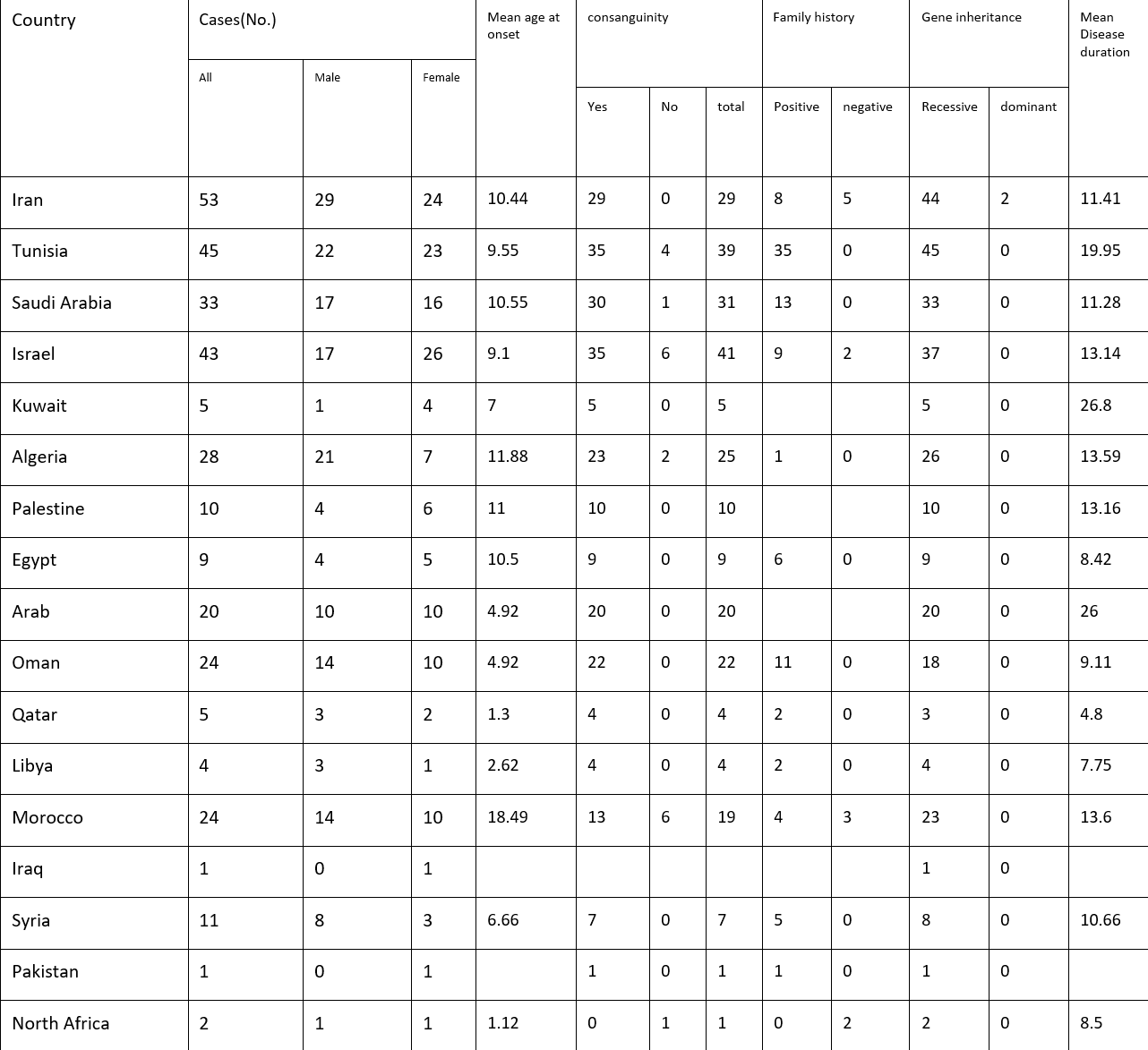Category: Spasticity
Objective: To systematically review existing literature and collect data on Hereditary Spastic Paraplegias(HSP) in the Middle East and North Africa(MENA), aiming to assess the prevalence of mutations, patient characteristics, common symptoms, and prevalent genes within these populations.
Background: HSPs, a group of inherited neurodegenerative disorders, are characterized by spasticity and weakness of limbs with motor sensory engagements. These symptoms are due to axonal degeneration of the lateral corticospinal tract. The prevalence of this disorder is estimated at 1.2-9.6 per 100000.1 HSP is classified based on the mode of inheritance, mutant gene, and clinically as complicated and uncomplicated. HSP has been demonstrated to be one of the most genetically diverse Mendelian disorders, with more than 80 different spastic gait genetic loci, this number is expected to climb over time due to advancements in DNA sequencing.2
Method: A highly sensitive systematic search of the literature to the end of August 2022 was done in online databases, including PubMed, MEDLINE, and Google Scholar. We used text and Medical Subject Heading Terms in combination. Studies focusing on HSP within the MENA countries that mentioned clinical manifestation and genetic aspects were included. Relevant data, including patient demographic characteristics, genetic mutations, presentations, and other crucial data, were extracted by two independent researchers.
Results: Based on the review of the included studies, Iran had the most HSP cases with 53 cases (16.7%), followed by Tunisia with 45 cases (14.2%), and Iraq and Pakistan had the least cases reported. The baseline characteristics with the frequency for each of the countries are presented in Table 1. spastic paraplegia gene 11(SPG) followed by SPG15 and SPG30 were the most prevalent mutations reported among the countries. Autosomal Recessive type of HSP with complex features was the most common form of HSP among the affected cases in the MENA region, this may be due to high rates of consanguinity in the families.
Conclusion: The findings overall present a comprehensive analysis of various genetic mutations associated with HSP and it reveals the molecular mechanisms underlying HSP and provides insights into the phenotypic variability associated with different gene mutations.
Table 1
References: 1-Fink JK. Hereditary spastic paraplegia: clinico-pathologic features and emerging molecular mechanisms. Acta Neuropathol (Berl). 2013;126(3):307-328. doi:10.1007/s00401-013-1115-8
2-Blackstone C. Hereditary spastic paraplegia. In: Handbook of Clinical Neurology. Vol 148. Elsevier; 2018:633-652. doi:10.1016/B978-0-444-64076-5.00041-7
To cite this abstract in AMA style:
M. Salari, S. Soleimani, F. Hojjati Pour. A Review of the Genetic Spectrum of Hereditary Spastic Paraplegias in the Middle East and North Africa Region [abstract]. Mov Disord. 2024; 39 (suppl 1). https://www.mdsabstracts.org/abstract/a-review-of-the-genetic-spectrum-of-hereditary-spastic-paraplegias-in-the-middle-east-and-north-africa-region/. Accessed December 30, 2025.« Back to 2024 International Congress
MDS Abstracts - https://www.mdsabstracts.org/abstract/a-review-of-the-genetic-spectrum-of-hereditary-spastic-paraplegias-in-the-middle-east-and-north-africa-region/

